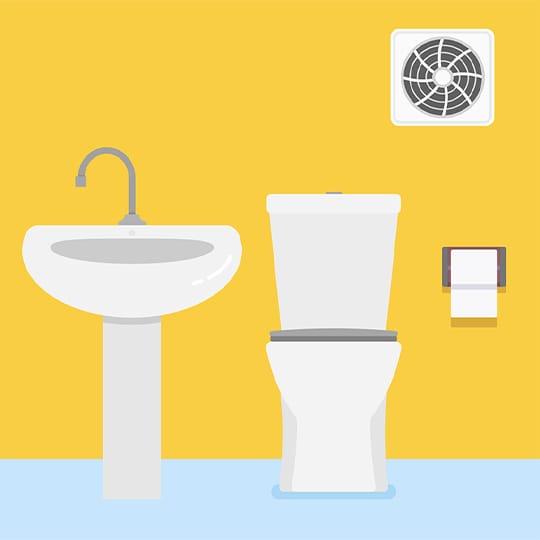-
How to Get Rid of Household Odors at Their Source
-
Nobody wants a stinky house. Instead of reaching for traditional air fresheners or candles that only mask odors in a small area temporarily, you need to find out what’s causing those icky smells in the first place.
Let us take you on a home tour of areas that could be causing odor, and teach you how to get rid of household odors at their source.
Kitchen odors
If your kitchen—or your entire home—smells like last night’s dinner, it’s time to make sure that your stove is properly ventilated. Regularly running a vent hood will help eliminate moisture, trap grease and remove heat caused by using the stove.
-
If you’re shopping for a vent hood, consider one that has an easy-to-clean surface and energy efficient lighting. If a hard-wired vent isn’t an option, simply blowing steam and smells out of the kitchen through an open window with a household fan is a good plan B. Also, cover pots and pans while cooking to help reduce odors and lower the humidity in your home.
-
Wall odors
It might be surprising, but walls and baseboards are common culprits of lingering odors. First tackle them with a good scrub down using a vinegar-and-water solution (try one-half cup vinegar with 1 gallon water). If you’re still not satisfied, it might be time for a fresh coat of paint. Start by applying a coat of primer that is specifically formulated to seal surfaces.
Just remember that home improvement projects that involve paint, stains, solvents or adhesives can release volatile organic compounds (VOCs) into the air, so be sure to switch on vent fans in the home and run them continuously whenever you are doing a painting project.
-
Floor odors
Carpet and rugs are odor magnets, especially if you have pets or smokers in your home. To neutralize and remove odors, liberally sprinkle rugs and carpets with baking soda and use a broom to brush the powder into the fibers. Wait at least 15 minutes for the baking soda to work its magic, then use a vacuum cleaner equipped with a high-efficiency particulate arresting (HEPA) filter to capture odor-causing contaminants.
-
Basement odors
If you’re having problems with mildew-y odors in your basement, the culprit could be a water trap under an infrequently used floor drain, wash basin or laundry tub. The water in the trap may have evaporated, allowing sewer gas to come up through the drain. Simply dump a pitcher of water into the drain to restore the trap water.
If the smell is still lingering, call a professional to inspect the problem. You may have a loose connection joint in a wall or ceiling, or a cracked or broken sewer line.
-
Bathroom odors
A bathroom vent fan can help to remove mold and mildew odors and push moist air to the outside of your home. First ensure that the vent is not clogged by a bird's nest or leaves, which can restrict airflow. Get into the habit of turning the fan on while showering and leaving it on for 20 minutes afterward to remove excess moisture from the air. Replacing the wall switch with a timer switch that turns the fan off automatically is a simple way to ensure you don't leave the fan running.
-
Whole House odors
A serious weapon against residential odors is the Filtrete™ Odor Reduction Filter for forced-air (HVAC) systems. It’s designed with activated carbon technology, which removes particles and odors while maintaining airflow.
Additionally, it pulls in and traps unwanted particles while letting cleaner air flow through. You can also find odor defense technology in select Filtrete™ Air Purifier filters and pre-filters, which can help reduce bad smells in specific rooms.
-






